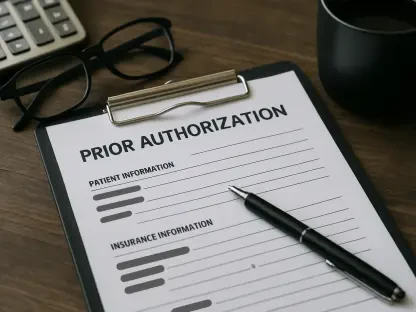In the United States, drug shortages in emergency care have been a persistent challenge for Emergency Medical Services (EMS), affecting both injectable and oral medications. These shortages, initially limited to injectable drugs, have since expanded to include oral and inhaled medications, posing a significant risk to patient care and EMS operations. This article delves into the complex causes behind these shortages, the current strategies being employed to manage them, and the future challenges expected to shape the landscape of emergency medical care.
Causes of Drug Shortages
Complex Factors in Manufacturing
The root causes of drug shortages primarily stem from intricate issues within the American manufacturing process. Among these factors, weather damage to manufacturing sites plays a major role, often disrupting production and supply chains. Natural disasters like hurricanes can severely impact the ability of pharmaceutical companies to produce and distribute essential drugs. Furthermore, product manufacturing problems, such as contamination or equipment failure, can halt production lines, leading to prolonged unavailability of critical medications.
Beyond immediate manufacturing challenges, underlying systemic issues contribute to the shortages. Disputes between drug manufacturers and federal agencies such as the FDA and DEA over manufacturing practices and quality standards often exacerbate the problem. While the FDA maintains a site dedicated to tracking drug shortages, the data provided has sometimes been found to be inaccurate. As a result, organizations like the American Society of Health-System Pharmacists (ASHP) and national medication distributors like Bound Tree have become more reliable resources for up-to-date information on emergency drug shortages.
Additional Contributing Factors
Additional factors adding to the drug shortages include unanticipated spikes in demand and pharmaceutical companies discontinuing older, less profitable products. Unforeseen increases in demand can swiftly outpace the supply, particularly during public health emergencies or seasonal outbreaks when the need for specific medications rises. In parallel, companies ceasing production of older drugs to prioritize newer, higher-margin products further strains the availability of necessary medications, particularly in emergency care settings.
These domestic issues are compounded by the unique nature of the U.S. pharmaceutical supply chain, which rarely relies on foreign sources for medications. This primarily domestic focus means that disruptions within the country significantly impact the overall availability of drugs. Additionally, the broader economic and policy landscape plays a role. For instance, reimbursement policies and pricing regulations can influence the supply of low-cost, low-margin medications, making it less financially viable for manufacturers to produce them. Together, these multifaceted causes create a challenging environment for EMS, necessitating comprehensive and adaptive management strategies.
Current Status and Trends
Medication Shortage Statistics
As of February 2025, the ASHP Drug Shortages Resource Center has reported a total of 271 medications in shortage across U.S. healthcare sectors, highlighting the widespread nature of the issue. Among these, only 30 emergency medication preparations are currently listed in shortage status, marking the lowest level since August 2021. This marginal improvement offers some relief, yet the overall scenario remains a significant concern for EMS departments nationwide as they strive to maintain readiness and quality of care.
This reduction in emergency medication shortages may be attributed to better awareness and proactive steps taken by EMS agencies to manage supply chains and inventory more effectively. However, this situation is continuously evolving, and new shortages can emerge at any time due to ongoing manufacturing issues or sudden changes in demand. Moreover, despite the modest decrease in the number of emergency medications in shortage, EMS providers must remain vigilant in monitoring and adapting to these dynamic conditions, ensuring that they can respond promptly to any potential supply disruptions.
Rising Costs of Essential Drugs
Despite some improvements in the availability of certain drugs, a persistent and significant challenge remains: the rising costs of essential EMS medications. This escalation in prices places a considerable strain on the budgets of many EMS departments, complicating their efforts to maintain adequate supplies and provide necessary care. The financial burden is particularly acute for smaller or underfunded agencies, which may struggle to absorb the increased costs and still meet their operational needs.
Several factors contribute to the rising drug prices. These include the high costs associated with research and development, manufacturing complexities, and regulatory compliance. Other contributing elements include market dynamics and competitive pressures that can drive up prices when the supply of essential medications is low. The interplay of these factors underscores the importance of developing strategic approaches to manage the financial impact on EMS systems, including exploring cost-sharing initiatives, bulk purchases, and other collaborative efforts with healthcare providers and regional partners.
Management of Drug Shortages
Addressing Supply Chain Challenges
To mitigate the impact of drug shortages, EMS logistics managers have implemented several key strategies aimed at addressing supply chain challenges. One critical task involves managing the supply, utilization, and storage of medications with short expiration windows to ensure they are used efficiently and reduce waste. Additionally, EMS agencies have focused on expanding supplies through inter-agency exchanges, allowing for the redistribution of drugs between organizations to meet urgent needs.
For instance, during the shortage of intravenous (IV) fluids caused by hurricane damage to production facilities in North Carolina, EMS systems nationwide had to adapt quickly to new medical guidelines. This situation highlighted the importance of having robust protocols in place for such emergencies. Managers also worked on improving the packaging and storage methods of medications, using centralized storage facilities to avoid redundant stockpiles and ensure that drugs can be deployed promptly based on anticipated patient needs. Such proactive and collaborative measures are vital in maintaining the effectiveness of EMS operations during periods of shortage.
Efficient Inventory Management
Efficient inventory management is another cornerstone of managing drug shortages within EMS. By closely monitoring medication use rates and aligning them with current inventory levels, EMS leaders can better predict future needs and ensure a continuous supply. This involves regular reporting on medication usage, supply status, and implemented strategies to extend available stocks. Additionally, services may adopt innovative logistics solutions, such as color-coded containers or stickers to highlight dosages and warnings, providing “just in time” guidance for paramedics at the point of care.
During particularly busy seasons like flu outbreaks, it is essential to evaluate the patterns of medication consumption and make informed decisions on restocking. By calculating monthly utilization rates and comparing them against current inventory, EMS leadership can determine whether they have enough supplies for the next 6 to 24 months and decide if additional orders are necessary. Establishing these processes helps to avoid sudden stockouts and ensures that EMS providers are equipped with the medications they need to deliver timely and effective patient care.
Role of Technology in EMS
Advanced Information Technology
The integration of advanced information technology in EMS has become increasingly indispensable in managing medication use, storage, and planning. By adopting sophisticated IT strategies, EMS agencies can enhance their operational efficiency and ensure the safety of controlled substances. For instance, automated systems for tracking medication distribution and usage can help prevent diversion and ensure compliance with regulatory standards. These systems enable real-time monitoring of inventory levels, identifying potential shortages before they become critical issues.
Moreover, the application of data analytics can provide invaluable insights into usage trends, helping EMS managers make informed decisions about stockpiling and procurement. By analyzing historical data, agencies can predict future needs more accurately and adjust their purchasing strategies accordingly. Enhanced communication platforms also facilitate better coordination between different EMS teams and healthcare providers, ensuring that critical information about drug availability and alternative treatments is shared promptly and effectively.
Comprehensive Inventory Management Systems
Implementing comprehensive inventory management systems is essential not only for medication management but also for overseeing other crucial EMS supplies. In the wake of the pandemic and post-pandemic years, EMS agencies have faced shortages of various essential items, from personal protective equipment to medical devices. A robust inventory management system can address these challenges by providing a centralized platform for tracking all supplies, streamlining procurement processes, and optimizing resource allocation.
Such systems can automate the replenishment of stocks based on predefined thresholds, ensuring that essential items are always available when needed. Additionally, they can facilitate better forecasting by analyzing patterns of usage and predicting future requirements. This level of control over inventory enables EMS agencies to respond more effectively to shortages, allocate resources more efficiently, and ultimately improve the quality of patient care. By leveraging technology, EMS can navigate the complexities of supply management and ensure readiness for future challenges.
Effects of Political Changes
Federal Workforce Layoffs
The rapid transition to a new administration in Washington, DC, has led to federal workforce layoffs, potentially compromising the functions of agencies like the FDA. These changes may result in slower quality inspections and approvals of medication manufacturing sites, further exacerbating the issue of drug shortages. As federal agencies play a crucial role in overseeing pharmaceutical production and ensuring compliance with safety standards, any disruption in their operations can have far-reaching consequences for the availability of essential medications.
The potential delay in regulatory processes could hinder the introduction of new drugs to the market and prolong the approval time for necessary manufacturing adjustments. This situation necessitates heightened vigilance and adaptability from EMS agencies to anticipate and respond to these regulatory delays. Developing contingency plans and maintaining open communication with suppliers and regulatory bodies become increasingly important to mitigate the impact of such political changes on drug availability.
Scrutiny of the Pharmaceutical Industry
The heightened scrutiny of the pharmaceutical industry under reimbursement policies presents another layer of complexity in managing drug shortages. These policies, aimed at controlling healthcare costs, can influence the production and supply of low-cost and low-margin medications, which are often essential in emergency medical care. Pharmaceutical companies may deem it financially unviable to continue manufacturing these drugs, leading to discontinuations and subsequent shortages.
Moreover, increased regulatory scrutiny and compliance requirements can add to the operational burdens of pharmaceutical companies, potentially slowing down production and affecting the supply chain. These factors underscore the need for EMS leaders to engage in active advocacy and collaboration with industry stakeholders and policymakers. By participating in discussions and decision-making processes, EMS agencies can help shape policies that balance cost containment with the reliable supply of critical medications, ensuring that their patients’ needs are met.
Adapting to Drug Shortages
Developing Flexible Guidelines
In response to drug shortages, EMS systems have developed flexible guidelines that automatically adjust for medication options, creating therapeutic substitutions as necessary. This adaptability is crucial for maintaining the continuity of patient care during periods of scarcity. System medical directors play a vital role in compiling lists of therapeutic substitutions, modifying medical protocols to incorporate alternative treatments, and ensuring that the agency’s drug license includes the new fluids and medications per state laws and regulations.
Provider education is also a critical component of adapting to drug shortages. EMS personnel must be trained to recognize the available therapeutic options and administer them safely and effectively. Regular training sessions and updates on protocol changes ensure that EMS providers are well-prepared to handle any contingency and deliver optimal patient care, regardless of medication availability.
Emphasizing Safety Elements
To prevent medication errors during drug shortages, safety elements must be emphasized, especially when medications arrive in different vials, ampules, concentrations, and volumes. The risk of dosing errors increases when providers are unfamiliar with the packaging or formulation of substitute drugs. To mitigate this risk, clear signage indicating usual dosages for adults and children can be placed on medication packages, enhancing safety and ensuring accurate administration.
Additionally, implementing double-check systems where two providers verify the medication and dosage before administration can further reduce the likelihood of errors. Investing in technology such as barcode scanning can also enhance medication safety by verifying the correct drug and dose before it is given to the patient. These safety measures are essential to maintain high standards of care and protect patients from potential adverse effects resulting from dosing inaccuracies or medication mix-ups.
Collaborative Approaches
Forming Alliances
To manage rising medication costs and develop effective strategies, EMS agencies may need to form alliances with regional hospitals or other EMS organizations. Creating cooperative networks can help spread the financial burden of increased drug prices and ensure a more stable supply of essential medications. These alliances enable bulk purchasing agreements, shared inventory systems, and collaborative problem-solving, providing a more resilient approach to managing shortages and cost fluctuations.
For example, partnering with regional hospitals can facilitate access to broader pharmaceutical supplies and allow for more flexible resource allocation. Additionally, these cooperative efforts can improve communication and coordination, ensuring that critical information about drug availability and best practices for managing shortages is disseminated rapidly and effectively. Such alliances strengthen the overall resilience of the healthcare system and enhance the ability of EMS agencies to provide continuous high-quality care.
Cooperative Action
Implementing phased approaches to shortages and fostering cooperative action among EMS agencies and hospitals offer practical solutions to the challenges posed by drug shortages. During the 2024 IV fluid shortage, southwestern Florida developed a sharing program that exemplified effective cooperation. By pooling resources and coordinating efforts, they were able to mitigate the impact of the scarcity and ensure that all participating agencies had access to necessary supplies.
Similar cooperative models can be applied to other medication shortages, leveraging collective strengths to overcome individual weaknesses. These shared initiatives emphasize the importance of collaboration in addressing systemic challenges and highlight the need for contingency planning and resource optimization. By working together, EMS agencies can create robust frameworks for managing shortages, ensuring that patient care remains uninterrupted even in the face of significant supply chain disruptions.
Strategies for the Future
Active Inventory Management
Active inventory management remains a cornerstone of ensuring the continuity of high-quality patient care amid drug shortages. EMS leaders must continuously monitor medication usage patterns, assess inventory levels, and prepare for potential supply chain disruptions. This proactive approach involves forecasting future needs based on historical data, identifying critical medications at risk of shortage, and implementing strategies to secure adequate supplies.
By maintaining a dynamic and responsive inventory management system, EMS agencies can swiftly adapt to changing circumstances and mitigate the impact of shortages on patient care. Regular audits and reviews of inventory practices, coupled with real-time tracking technologies, can enhance the accuracy and efficiency of stock management. This ensures that EMS providers have access to the necessary medications and can deliver timely and effective treatment to patients in need.
Leveraging Technological Advancements
In the United States, drug shortages have become a persistent issue for Emergency Medical Services (EMS), affecting both injectable and oral medications. Originally, these shortages were confined to injectable drugs but have expanded to oral and inhaled medications, posing significant risks to patient care and EMS operations. The root causes of these shortages are multifaceted, involving manufacturing issues, supply chain disruptions, and regulatory challenges. This article explores the intricate factors contributing to these shortages, the strategies currently employed to manage them, and the anticipated future challenges that will likely shape emergency medical care. To mitigate the impact on patient care, EMS organizations have adopted various strategies including drug substitution, conservation techniques, and increased collaboration with pharmacies and other healthcare entities. It is crucial to understand these elements to navigate the evolving landscape and ensure uninterrupted patient care in emergency settings.









